Lupins care guide: growing advice for these structural summer blooms
Learn how to grow lupins in your garden and enjoy their architectural form and vibrant color

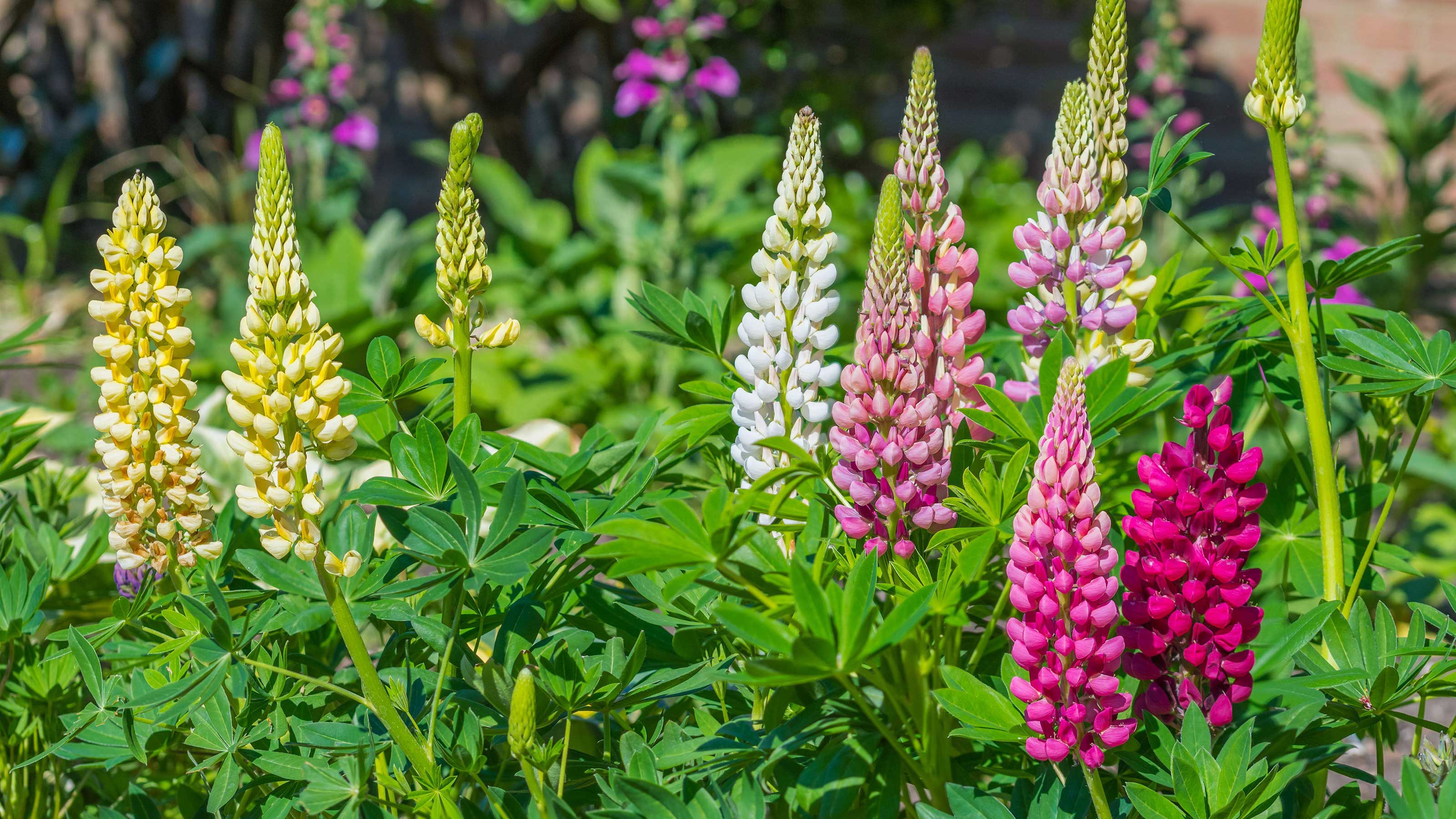
Lupins are annual, perennial, or sometimes shrubby plants in the pea family with similar two-lipped flowers as sweet peas and pole beans. They come in a wide variety of bright and pastel colors, and their roots have the valuable capacity to trap nitrogen from the air and enrich the fertility of the soil.
Most have divided leaves with anything from five to 25 fingers, and a few have attractive, silvered foliage. The flowers themselves are carried in spikes with the flowers spread around the stems – the spikes may be short and sparse or long and densely packed.
Colorful perennial types are a firm favorite when it comes to flower bed ideas for cottage-style gardens. But, they can look spectacular in modern schemes, too. Varieties of lupin are also important food plants for the caterpillars of some butterflies. They can attract hummingbirds that feed on the nectar, too.
What are the main types of lupins?
Lupins can conveniently be divided into annuals, perennials, and shrubs – while there are native species in each group.
Such wild lupins include the bluebonnet (Lupinus texensis) which is the state flower of Texas; the yellow tree lupin (Lupinus arboreus) – a bushy shrub, not a tree, from the California coast; and the wild blue lupin (Lupinus perennis) that is sadly declining in the northeast of America where it was once widely seen.
- Perennial lupins: Most lupins that we see are brightly colorful and easy to grow (though relatively short-lived) hardy perennials for USDA zones 5–8. The densely packed spires come in just about every color, with some astonishing bicolored varieties, all set against bold foliage.
- Annual lupins: Annual lupins can be neat, twiggy, hardy, and often scented plants with clusters of short spikes of small flowers. But, they can also be large-flowered plants almost as tall as a person. The famous Texas bluebonnets fit here.
- Shrubby lupins: The most familiar of the tree lupins is an easy-to-grow though short-lived California native, for zones 7–10. Other species with more attractively-silvered leaves are difficult to grow as they are very sensitive to damp conditions.
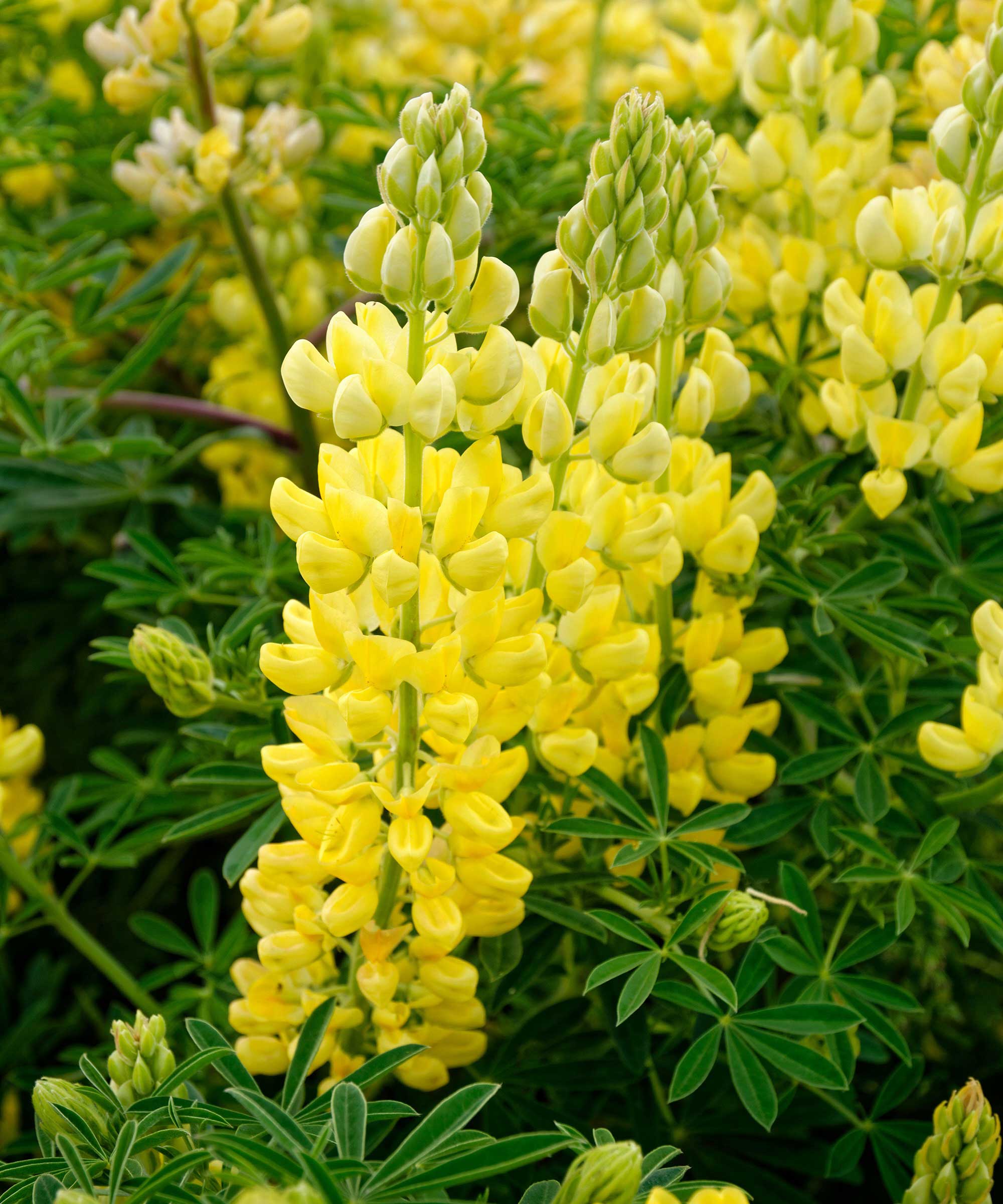
How to pick the best type of lupin for your garden
For perennial or mixed borders, whimsical flower beds full of the best cottage garden plants, and pollinator-friendly gardens, look for perennial varieties in the 'Band of Nobles Series' and the 'Westcountry Series'. These tend to be relatively tall: 2–3ft (60–90cm) and sometimes taller. If you need shorter varieties, try the 'Gallery Series' which grow to around 1–2ft (30–60cm). These are all for USDA zones 7–10.
Shorter, bushier annuals including the 'Avalune Series' are ideal towards the front of the border where you can enjoy their fragrance and pick a few spikes for posies. The dramatic tall annual types, including 'Sunrise', are for mixed borders and flower borders but need discreet support.
In dry gardens and in Mediterranean gardens, yellow tree lupins are ideal, and they also sometimes come with white or blue flowers. Silver foliage types, including the silver bush lupin (Lupinus albifrons – zone 8–10), also work well in these situations. They do well for container gardening ideas, also, but good drainage is vital.
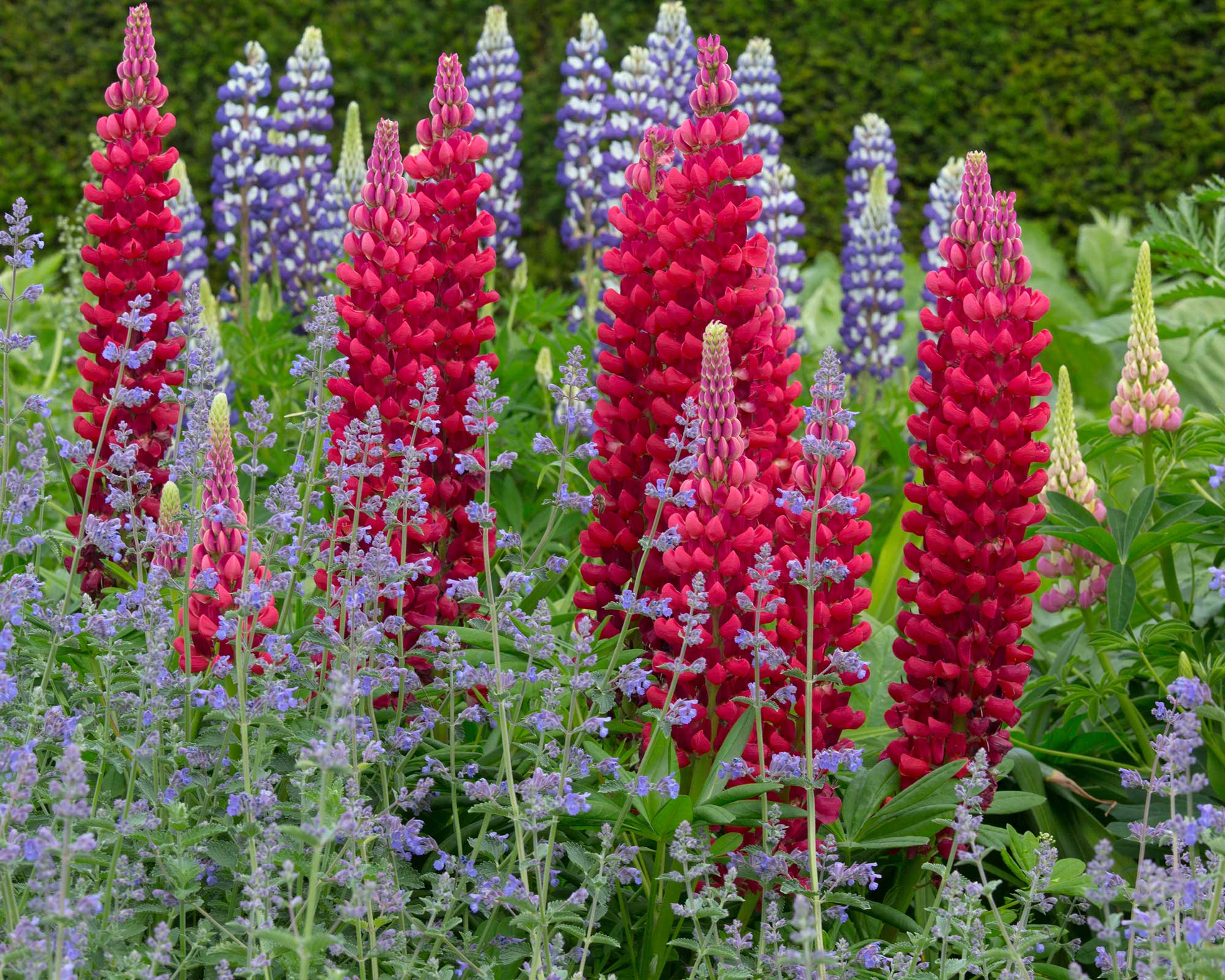
How to propagate lupins
Learning how to grow flowers from seed is a cheaper approach than buying ready-grown plants, and is generally more rewarding, too. And with lupins, it's quite straightforward.
Annual lupins are best sown in spring in a sunny, well-drained site where they are to flower. Thin out the seedlings as recommended on the seed packet – unfortunately, annual lupins dislike transplanting.
Perennial types can also be raised from seed. Sow in early spring in individual cells, then move the seedlings on into 4in (10cm) pots as they develop. Dwarf types, in particular, will usually flower in their first summer. Alternatively, sow in early summer, then plant out in fall or overwinter the young plants in their pots for planting the following spring. Summer sown seeds will bloom late the following spring.
Tree lupins can be grown from seed sown in spring in the same way as perennials.
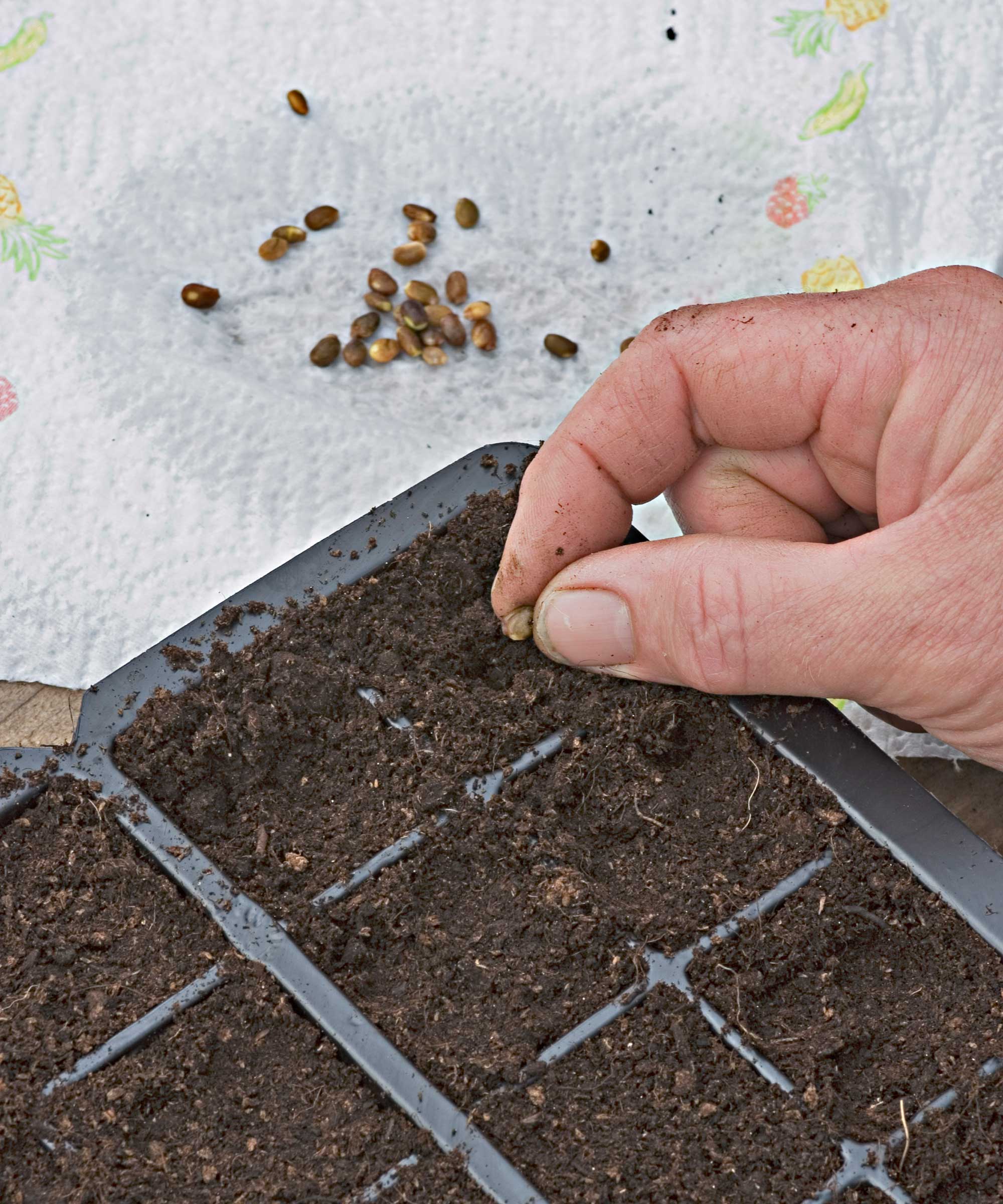
Perennial lupins can also be dug up as they start to grow in spring, then divided into two or three pieces, and replanted to flower a few months later.
Taking cuttings from plants is also possible with perennial lupins – take them from new growth in spring. However, be warned – the success rate is low.
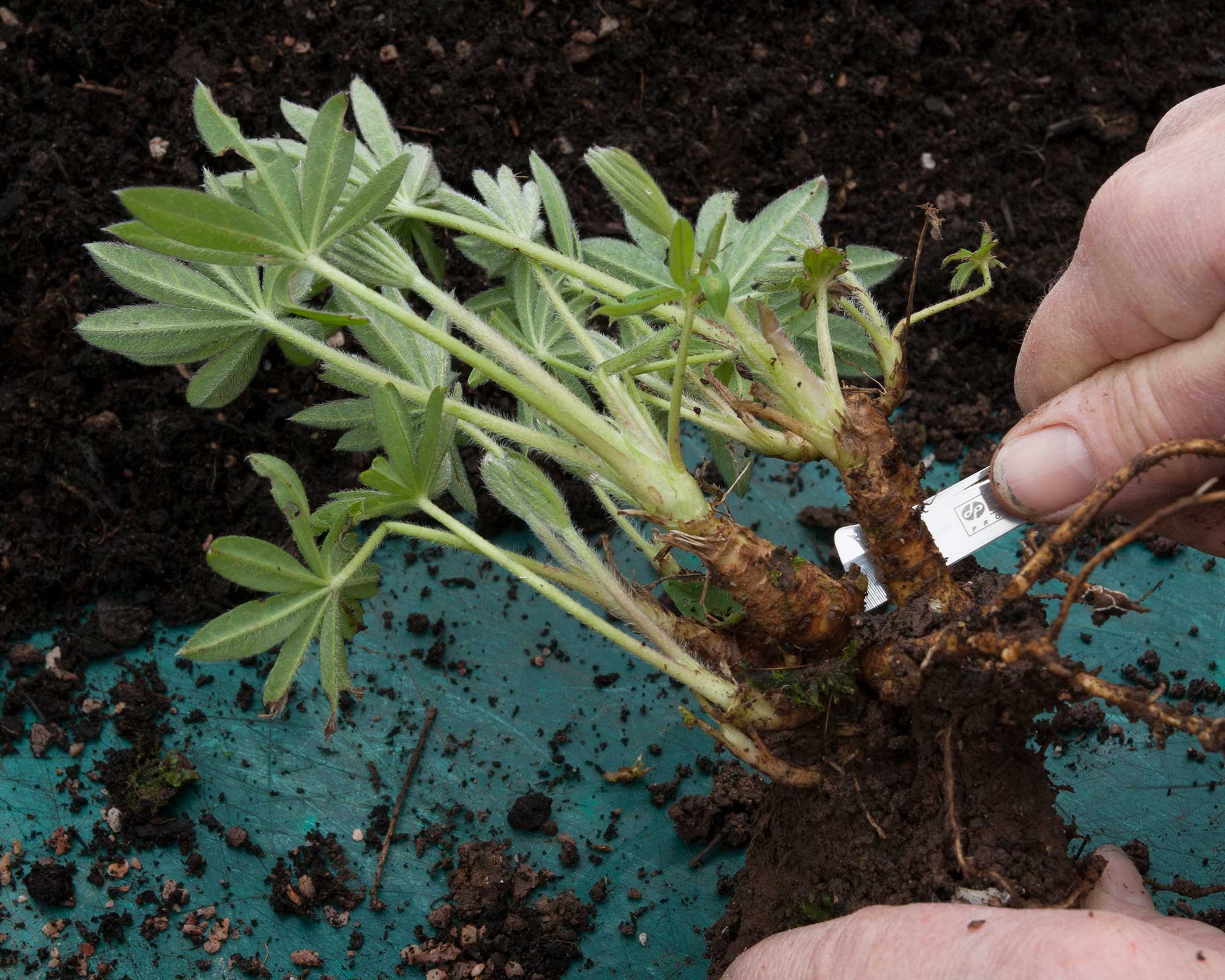
Where and when to plant lupins
Almost all lupins enjoy the sun. However, the wild blue lupin (Lupinus perennis) sometimes grows in part shade on forest margins if the drainage is good.
Bought plants should usually be planted as soon as they arrive, or as soon as you get them home from the nursery, unless the spring nights are frosty or spring snowmelt or rain has been heavy. If that's the case, it's best to wait: keep the plants in a light but cozy place until the frosts have passed or excess water has drained away.
All lupins need good drainage – in wet winter conditions they will soon rot and fade away. Avoid adding organic matter when sowing annuals or planting tree lupins, but perennial lupins benefit from amending very light soil and clay soil. Perennial types prefer neutral or acid conditions.
Tree lupins grow well in garden planters, but again, good drainage is essential. Because of this, be sure that the container you use is raised on pot feet.
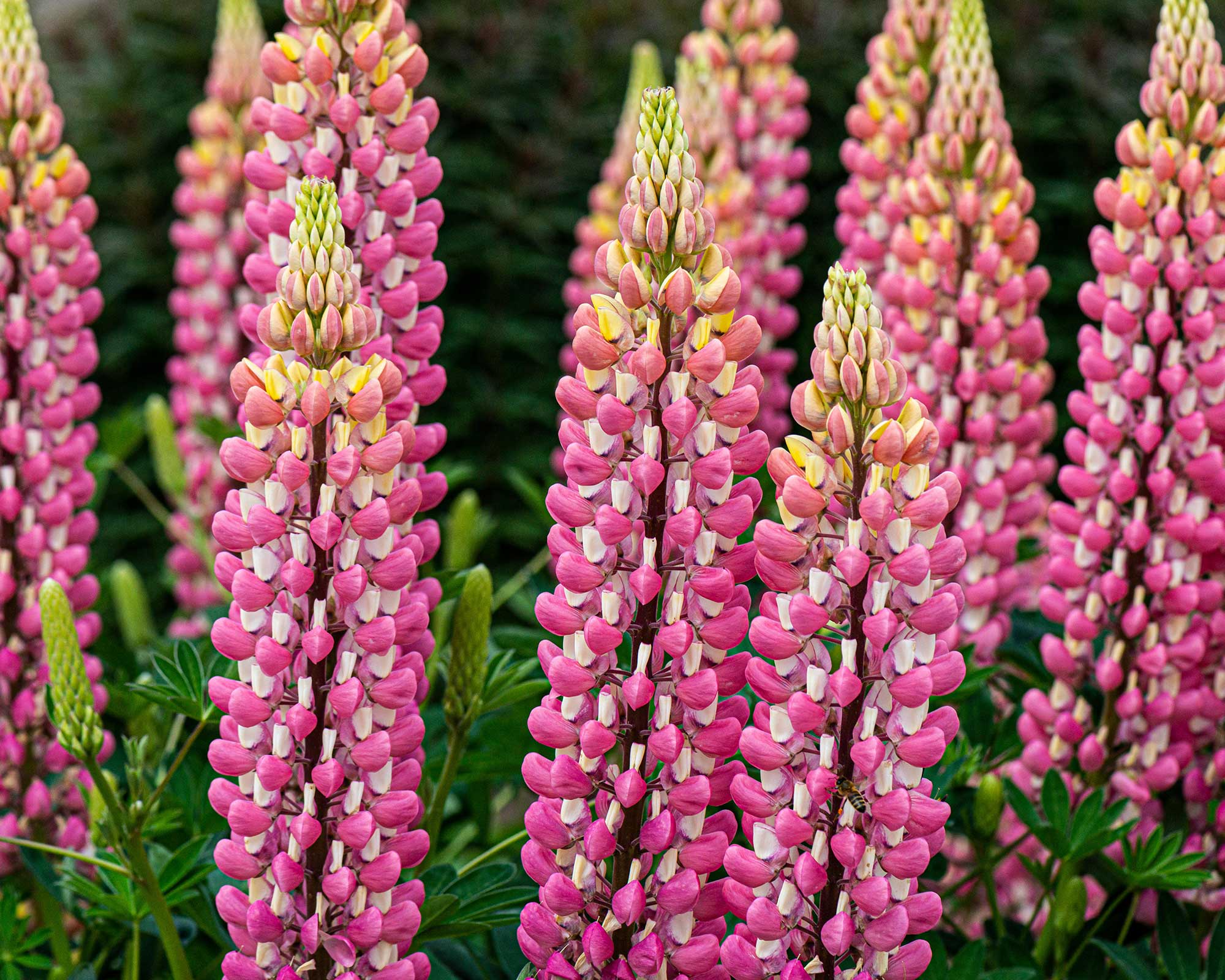
How to care for lupins
Lupin care is quite simple once you've got the know-how.
Support is usually necessary for tall annual lupins and the perennial varieties. Canes 4ft (1.2m) long, spaced around the plants or clumps and tightly looped round with twine, usually prevent the plants from falling over while not being too obtrusive.
For lupins – whether annual, perennial, or shrubby – deadheading flowers makes a significant difference in extending the flowering season. This is especially true of the named perennial varieties. So, don't forget to put your best secateurs to good use.
However, if not deadheaded, both the annual varieties and the shrubby types may self-sow, providing you with new plants for the following year.
After flowering, perennial types can look ragged. Cut them back hard, water, and feed – they will often develop some colorful late spikes.
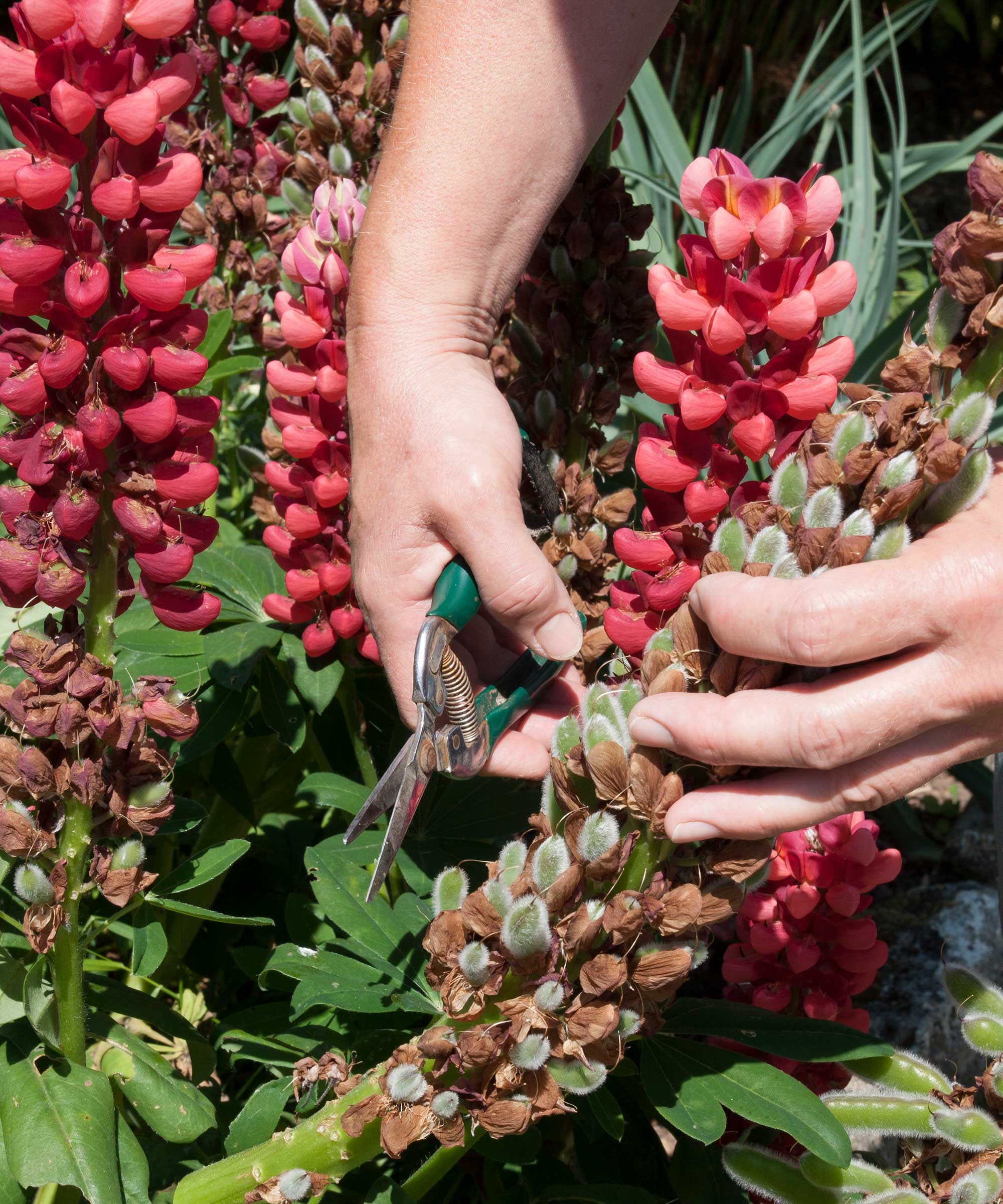
Common problems with lupins and how to solve them
Annual lupins and tree lupins are rarely troubled by pests or diseases – bad drainage is usually the biggest problem.
However, the unusually large gray lupin aphid can cause trouble. It feeds exclusively on lupins, quickly developing into colonies, but can be treated with your favorite organic pest killer. Birds will also sometimes control them.
Slugs and snails can cause severe damage to emerging shoots of perennials in spring, so be alert and ready with your preferred control. Our guide on how to get rid of slugs has plenty of options.
Powdery mildew can infect perennials in dry conditions. Snipping off infected leaves is usually enough to control the problem, although in severe cases, a fungicide application may be necessary.
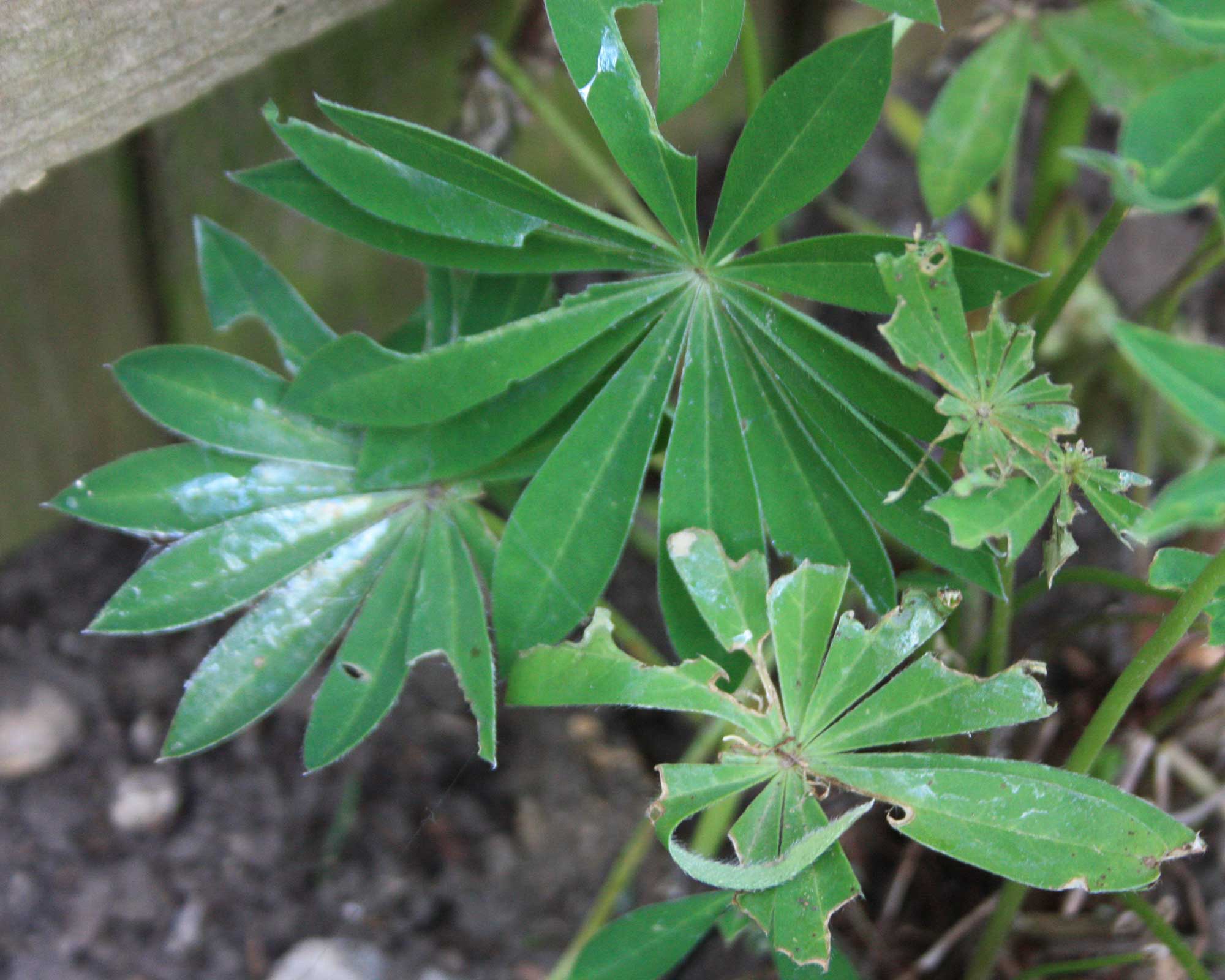
There are some caterpillars eating the leaves of my lupins, should I spray them or squish them?
Neither – embrace them as part of your wildlife garden ideas. Some butterflies depend on lupins for food for their caterpillars and these include the Karner blue, Fender's blue, and the mission blue – all of which are increasingly endangered.
Most feed on the wild perennial lupin (Lupinus perennis) but also on other species. If you're in the US and looking for local guidance on butterflies and host plants in your area, check with your Cooperative Extension Service.
Why did my lupins die after they flowered?
Some lupins are annuals, that is they are programmed to die after flowering and setting seed. While you can often prolong their life into the autumn by deadheading, the short days and chills of autumn will usually kill them.
Perennial lupins and tree lupins are all naturally short-lived plants. The perennials tend to decline after three or four years, but can usually be rejuvenated by splitting and re-planting in spring.
Tree lupins will also tend to suddenly die after three or four years, leaving a mound of dead twigs. Raising replacements from seed is usually a simple process.
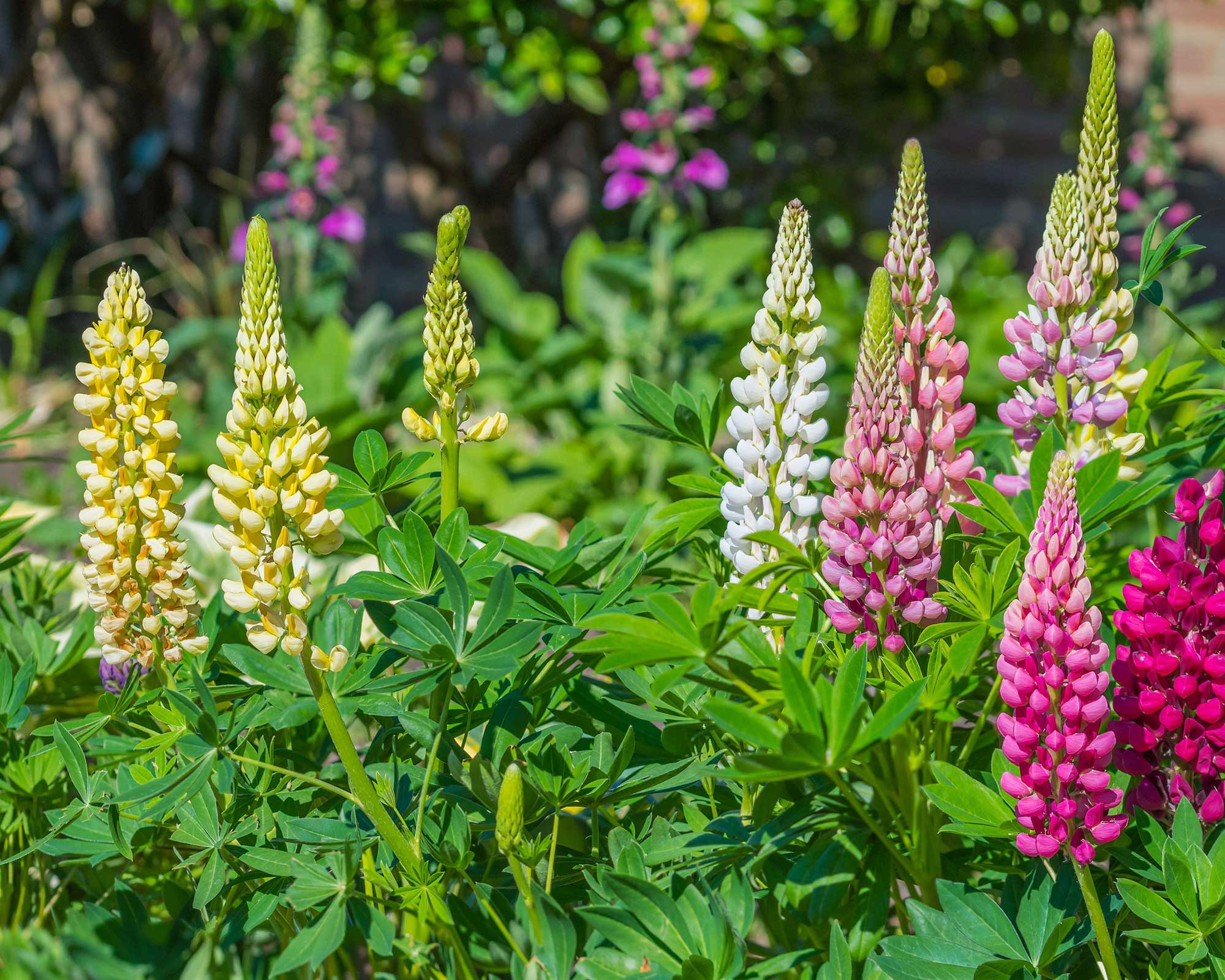
I saw bluebonnets on vacation in Texas, can I grow them in New Jersey?
It is possible to grow bluebonnets (Lupinus texensis) in New Jersey and other northern states that are wetter and colder than Texas, but it is not easy.
The problem is that, in Texas, bluebonnet seeds sprout in the fall, build up into good-sized plants during winter, then bloom in spring, usually from February to April. If they do that in colder areas, the winter kills them.
However, if you sow seeds in spring, the plants try to flower while still very small and are either too puny to be of interest or die in the attempt.
Other, more reliable annual blue lupins are sometimes available and these include 'Avalune Blue' and Lupinus angustifolius.
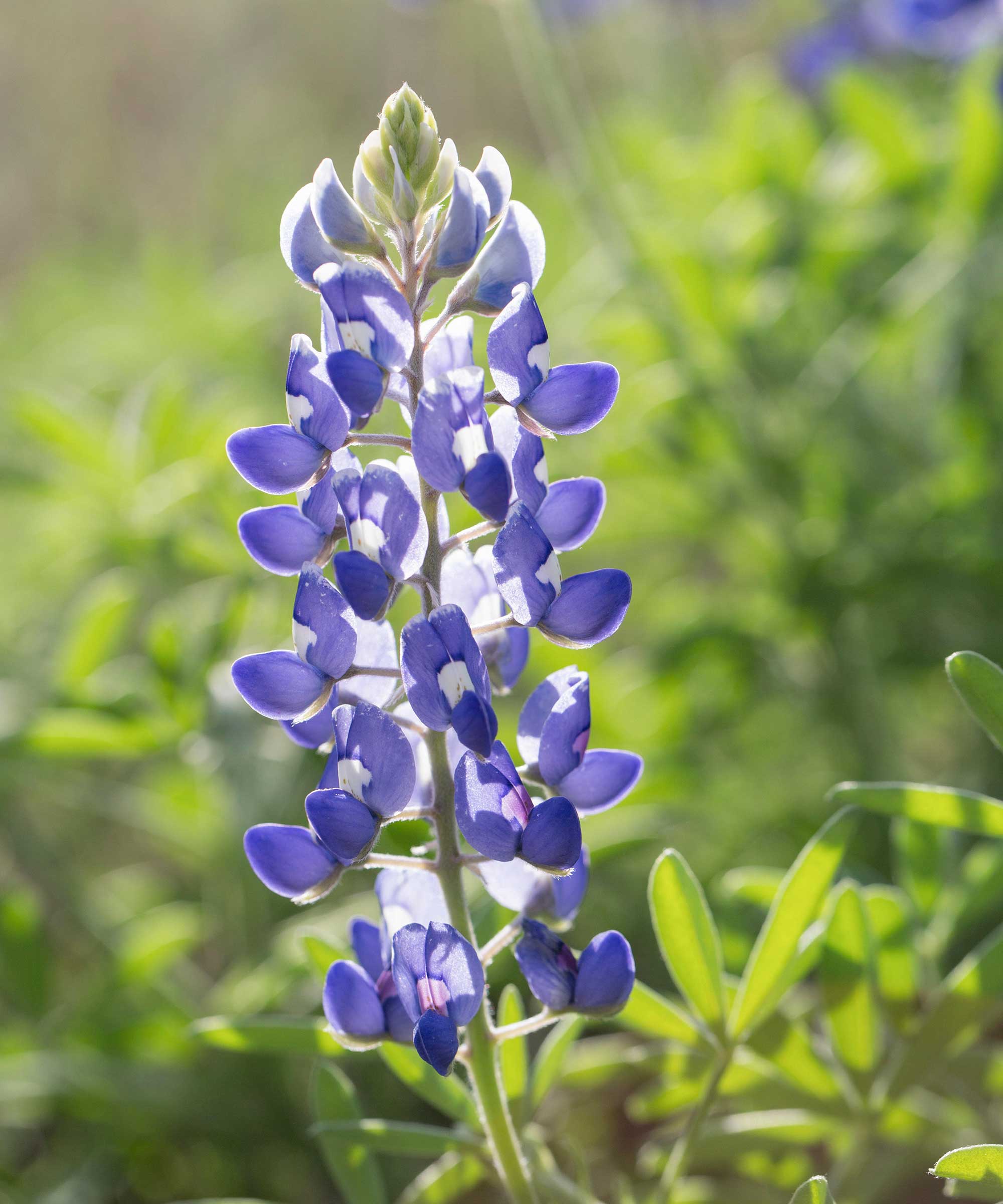
I planted a lupin variety with red and white flowers a few years back, but now the flowers are blue. What's going on?
If you leave the faded flowers on your lupins, they will turn to seed which will drop into the clump. If these seeds sprout, the resulting plants are unlikely to be the same as the original from which the seed dropped.
In fact, the plants that spring from the dropped seed are more likely to be similar to wild lupins, which are blue.
Where to buy lupins
Now you know how to grow lupins, you probably want some of your own to pep up your garden borders or pots.
Lupins are available as seeds, as young plants, and as flowering plants.
The seeds are easy to handle and by far the best way to buy annual types. Annuals are also sometimes available as young plants but may not transplant well. Remember that the seed is best sown where it is to flower, in a sunny, well-drained site.
Seed of perennial types is also available, inexpensive, and easy to sow. But, except for the best dwarf perennial types, many of the top varieties do not come as seeds. For the very best perennial types, choose young plants or flowering plants of named varieties. The garden departments of big box stores and local retail nurseries sometimes sell perennial lupins in full flower.
Shrubby types can also be raised from seed sown in pots and planted out. Alternatively, plants are often available from native plant specialists.
Plants grow strongly after planting and usually establish well, so perennials and shrubs can also be bought as young plants by mail order.
We've rounded up some useful quicklinks below to start your search.
Where to buy lupins in the US:
- Shop lupins at Amazon
- Shop lupins at Annie's Annuals
- Shop lupins at Eden Brothers
- Shop lupins at Garden Crossings
- Shop lupins at Walmart
Where to buy lupins in the UK:

Graham Rice is a garden writer who has won awards for his work online, and in books and magazines, on both sides of the Atlantic. He is a member of a number of Royal Horticultural Society committees and the recipient of the 2021 Garden Media Guild Lifetime Achievement Award.
